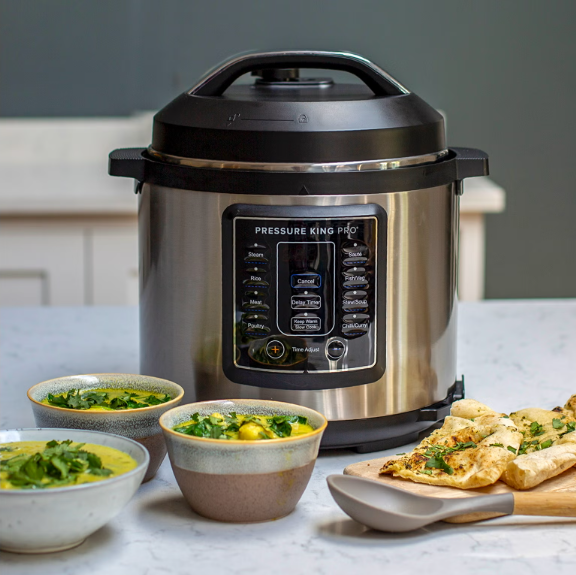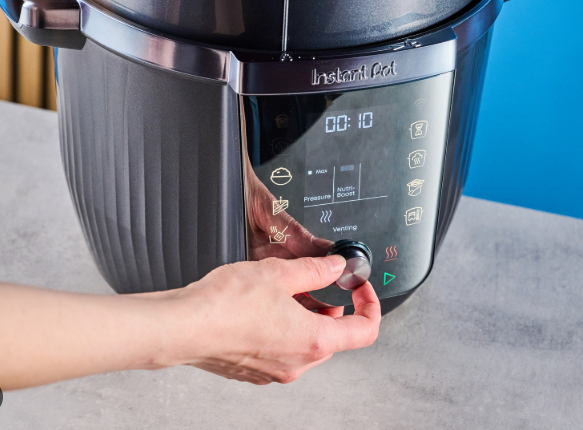Navigating an electric cooker buying guide in 2025 can help you choose the perfect appliance to simplify cooking with electric cooker. Electric cookers, ranging from rice cookers to multi-cookers, are versatile devices that prepare rice, soups, steamed dishes, and more with ease, making them ideal for beginners, busy households, or those seeking a portable electric cooker. Unlike stovetop methods, electric cookers offer consistent heat and user-friendly features, as emphasized in this electric cooker buying guide. Whether you’re eyeing a basic model or a smart multi-cooker, this electric cooker user guide ensures you make an informed purchase and use your cooker effectively. For more insights, explore our electric cooking tips.
This electric cooker buying guide covers preparation, a step-by-step cooking process including how to cook rice in an electric cooker, maintenance tips, troubleshooting advice, and answers to common questions. Designed for beginners, this guide helps you select and master your electric cooker with confidence. Always consult your model’s manual for specific instructions. Let’s dive into choosing and using the best electric cooker in 2025!
What You Need Before Using
Before using your new electric cooker, as outlined in this electric cooker buying guide, proper preparation ensures safe and effective operation. Your cooker typically includes a main unit, a non-stick or stainless steel inner pot, lid, measuring cup, spatula, and often a steaming basket, as seen in models like the Instant Pot Duo or Zojirushi NS-TSC10. If accessories are missing, purchase compatible ones from the manufacturer to ensure electric cooker safety and performance.
Check your cooker’s power compatibility—most models use 120V outlets in the U.S. or 220V elsewhere, so confirm for your region. Verify capacity: 3-5 cups for individuals (ideal for portable electric cooker models) or 6-10 cups for families. Choosing the right size prevents spills and suits your cooking needs. For safety, place the cooker on a stable, heat-resistant surface, away from water to avoid electrical hazards. Inspect the power cord for damage; replace if frayed to prevent issues during electric cooker troubleshooting. Use in a well-ventilated area and never leave unattended, especially during initial use.

Before first use, clean the inner pot, lid, and accessories with warm soapy water, rinse thoroughly, and dry to remove manufacturing residues. Use the provided measuring cup for accurate portions; a 1:1.5 rice-to-water ratio works for white rice, with adjustments for brown varieties. Read the manual for model-specific settings, as some cookers offer advanced features like fuzzy logic or app connectivity. Gather ingredients, keep children and pets away from hot surfaces, and use oven mitts. Use a dedicated outlet to avoid circuit overloads. These steps ensure a smooth electric cooker setup. For more guidance, visit our cooker guide.
Step-by-Step Cooking Guide
This electric cooker buying guide provides a beginner-friendly electric cooker user guide to help you use your new appliance effectively, whether it’s a rice cooker or a multi-cooker. We’ll cover preparing ingredients, electric cooker setup, selecting modes, starting cooking, testing doneness, and electric cooker troubleshooting.
Preparing Ingredients
Proper preparation ensures optimal results with your electric cooker. For how to cook rice in an electric cooker, rinse 1-2 cups of rice under cold water until clear to remove excess starch, ensuring fluffy grains, a tip emphasized in this electric cooker buying guide. Drain thoroughly. For soups, chop vegetables like onions, carrots, or celery, and measure broth or water (e.g., 4-6 cups for a 6-quart cooker). Season early with salt or herbs for flavor. For steaming, place vegetables, fish, or dumplings in the steaming basket. Prep takes 5-10 minutes, minimizing mess and supporting electric cooker maintenance.
Setting Up the Cooker
Plug your electric cooker into a stable outlet on a flat, heat-resistant surface. Insert the clean inner pot, add ingredients (e.g., rinsed rice and water), and secure the lid until it locks. Select the cooking mode via the control panel—basic models offer “Cook” and “Warm,” while advanced models like multi-cookers have presets for rice, steam, or soup. For portable electric cooker users, ensure stability to avoid spills, a feature to consider when choosing a model.

Check the lid seal and steam valve (if applicable) to prevent leaks, which can affect performance. If using a smart model, ensure Wi-Fi or Bluetooth connectivity for advanced features, a key factor in selecting the electric cooker buying guide recommendations.
Selecting Modes
Choose the appropriate mode for your dish. For rice, select “White Rice” or “Brown Rice” for automatic timing—advanced models use fuzzy logic to adjust for grain type, ensuring perfect results. Use “Steam” mode for vegetables or fish, adding 1-2 cups of water below the rack. “Soup” or “Porridge” modes suit slow-simmered dishes, while multi-cookers offer “Pressure Cook” for meats or beans. If no presets, set manual times: 15-30 minutes for rice, 45-60 for soups. These modes make cooking with electric cooker intuitive, a key benefit highlighted in this electric cooker buying guide.
Starting Cooking
Press “Start” or flip the switch—the indicator light or display confirms operation. Keep steam vents clear to avoid buildup. Avoid opening the lid mid-cook to maintain heat. Most electric cookers switch to “Warm” mode automatically, maintaining food temperature without overcooking. Cooking times vary: rice takes 15-30 minutes, soups 45-60 minutes. For smart models, monitor progress via the app for real-time updates.
Testing Doneness
After switching to “Warm,” wait 5-10 minutes for settling (or use quick release for pressure cookers). Open the lid using oven mitts to avoid steam burns. For rice, fluff with a spatula and check for tenderness—grains should be soft but not mushy. For soups, taste for seasoning and texture; vegetables should be tender. If undercooked, add water and restart briefly. For steamed items, test with a fork—they should be tender yet crisp. Choosing a reliable model, as outlined in this electric cooker buying guide, ensures consistent results.
Troubleshooting
For electric cooker troubleshooting, address common issues with electric cookers:
1. Not Heating: Check the power supply—test the outlet with another device. Inspect the cord for damage; replace if frayed. Ensure the inner pot contacts the heating element properly.
2. Steam Leaks: Verify the lid is locked and the sealing ring (if applicable) is intact. Replace worn seals to maintain heat or pressure.
3. Burnt Food: Clean residue from the inner pot or heating plate; use more liquid (e.g., 1:1.5 for rice) to prevent scorching.
4. Error Codes (e.g., E1, C6): Refer to the manual—codes often indicate sensor issues. Unplug for 10 minutes to reset, then retry.
5. App Issues: For smart models, restart Wi-Fi/Bluetooth or update the app. Check the manual for pairing instructions.
If issues persist, contact the manufacturer’s support. Practice with electric cooker recipes like steamed vegetables or chili to test fixes, ensuring your cooker aligns with this electric cooker buying guide.
Tips for Successful Cooking
Maximize your electric cooker with these best electric cooker tips, crucial for buyers following this electric cooker buying guide. For electric cooker maintenance, clean the cooled inner pot with a soft sponge—avoid abrasives to protect the non-stick or stainless steel surface. Wash the lid, sealing ring (if applicable), and steam basket with warm soapy water; air dry to prevent mold. Never immerse the base; wipe with a damp cloth. Soak the pot in a vinegar-water mix (1:4 ratio) for 15-20 minutes to remove stains.
For electric cooker safety, use silicone or wooden utensils to avoid scratches, and store in a dry place. Save energy by cooking in batches and using “Warm” mode’s residual heat—electric cookers are energy-efficient, a key factor when choosing a model. Explore electric cooker recipes like quinoa, steamed eggs, or yogurt for variety, especially with multi-cookers. Add seasonings post-cook for flavor flexibility. For portable electric cooker use, pack compact models securely and check voltage compatibility when traveling. Avoid overfilling to prevent spills—follow capacity markers. Descale every three months with a vinegar-water mix to maintain performance. For more tips, visit our electric cooker.
Frequently Asked Questions
This electric cooker buying guide addresses common queries to enhance your electric cooker user guide.
What Happens If Power Goes Out?
If power cuts off, cooking stops, and pressure (if applicable) releases naturally. When power resumes, restart if less than halfway done; otherwise, check doneness manually with a fork or taste test. Discard food if left warm too long to avoid spoilage. Electric cookers recover well with reliable “Warm” modes.
How to Fix Common Issues?
Beyond electric cooker troubleshooting, fix steam leaks by tightening the lid or replacing the seal. For sticky rice, adjust water ratios (e.g., 1:1.5 for white rice) and clean thoroughly. Regular maintenance prevents issues, a key consideration when selecting a model in this electric cooker buying guide.
Do You Need Professional Help?
Minor fixes like cleaning or seal replacement are DIY-friendly. For persistent issues like electrical faults or sensor errors, contact the manufacturer’s support. Many cookers offer warranty coverage, a factor to check before purchasing.
Is It Safe for Travel?
Portable electric cooker models, like 3-cup rice cookers, are travel-safe if voltage-compatible. Pack securely and check airline rules for smart models with batteries. Use in hotels with stable power to ensure electric cooker safety and functionality.
Conclusion
This electric cooker buying guide highlights the versatility, ease, and efficiency of electric cookers, making them a top choice for 2025 kitchens. With straightforward electric cooker setup, diverse electric cooker recipes, and robust troubleshooting, these appliances simplify meal prep for beginners and busy cooks. Choose the right model, maintain it well, and cook with confidence.
Ready to find the perfect electric cooker? Discover more electric cooking tips to master your cooking in 2025!